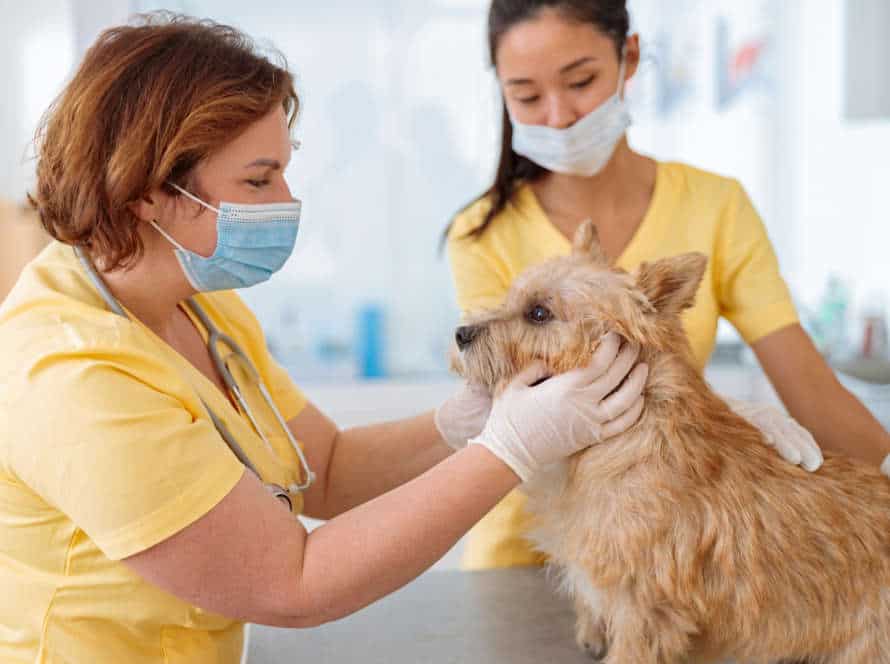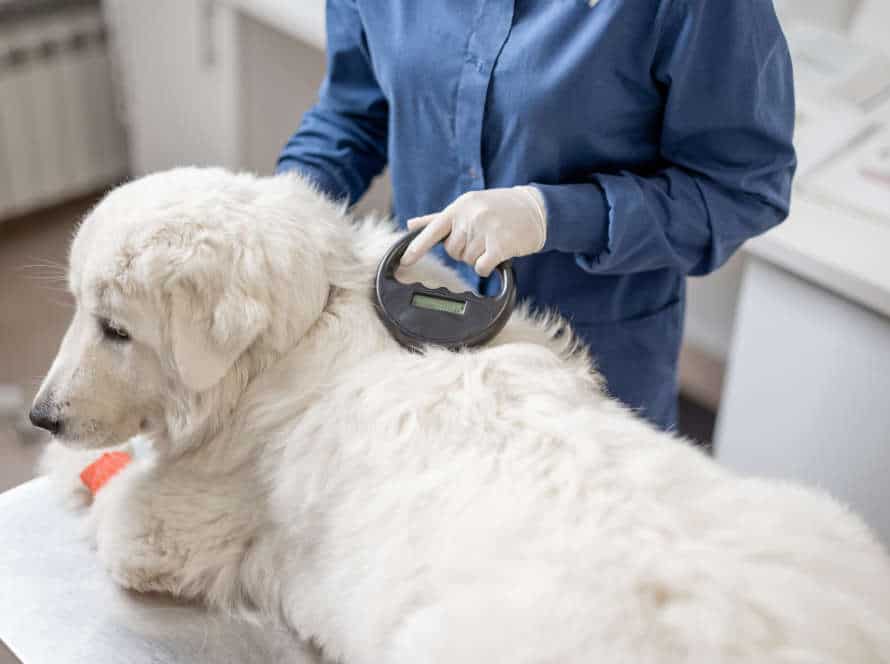Spaying and Neutering: Debunking Common Myths
Spaying and neutering are important for controlling pet population and keeping animals healthy. There are myths surrounding these procedures, though, that stop pet owners from doing the right thing.
- Myth #1: Spaying or neutering will make my pet fat and lazy. Not true! In fact, it can reduce the risk of your pet being overweight and lazy due to decreased appetite and roaming.
- Myth #2: My pet will lose its protective instincts after spaying or neutering. Wrong again! These traits are genetic, so the reproductive organs don’t make a difference.
- Myth #3: My pet needs to have at least one litter before being spayed. False! There’s no evidence to suggest it has any physical or emotional benefits. Plus, it could even increase the risk of certain diseases.
Spaying and neutering are safe and effective. They help pets live longer and healthier lives, while also controlling the pet population.
Benefits of Spaying/Neutering Your Pet
Spaying and neutering your pet has many advantages, but these are often overlooked due to some widespread myths. These procedures are important for the health and happiness of your pet and also to stop the number of homeless animals. Here are some benefits and we will also clear away the myths:
Overall Health Benefits
Spaying and neutering pets have multiple health benefits. It can improve their well-being and prolong their life.
For female pets, spaying reduces the risk of uterine and mammary gland cancers, uterine infections, pyometra, and unwanted pregnancies.
For male pets, neutering reduces the risk of testicular cancer, prostate problems, certain aggressive behaviors, wandering, and mating with other animals.
Contrary to popular belief, spaying and neutering does not make pets lazy or obese, nor does it change their personality or hunting/protecting instincts.
In fact, spaying and neutering at the right age can make pets more socialized, affectionate, and loyal to their owners. It also reduces aggressive behavior, marking, and wandering.
Behavioral Benefits
Spaying and neutering your pet can have many advantages! It can enhance your pet’s life and your bond. If you spay a female pet, it can prevent behaviors like loud noises, wandering, and marking when she is in heat. Also, it can reduce the danger of certain illnesses, such as breast cancer and uterine infections. Neutering a male pet can stop aggressive behavior, marking territories, and wandering. Plus, it reduces the risk of testicular cancer and prostate issues.
Contrary to popular belief, spay/neuter won’t make your pet lazy or change their personality. In fact, they’ll likely be calmer, more loving, and less likely to have bad behaviors.
In summary, spay/neuter brings many benefits to your pet while keeping them healthy and safe. A tip: Ask your vet when is the best time to do this.
Financial Benefits
Spaying and neutering your pets not only helps with pet overpopulation, but it also brings financial benefits! Here are some of them:
- Lower medical costs. Spaying/neutering can lower the risk of various health issues, like cancer, infections, and behavioral problems. This way, you save on medical bills.
- Reduced licensing fees. Many states and counties offer discounts for spayed/neutered pets.
- Lower shelter fees. Unwanted litters can pile up expensive fees if you surrender them. Spaying/neutering your pets lowers the chance of this happening.
- Avoid costly accidental breeding. Unplanned litters can mean unexpected expenses, like breeding fees, vet bills, and food. Spaying/neutering is a great way to avoid such costs, while providing lifelong health benefits to your pets!
Myths Surrounding Spaying/Neutering
Spaying and neutering provide many health and behavior perks for pets. But, sadly, these procedures are still surrounded by myths. People may not know the facts, or have wrong info. Let’s take a look at some of these myths and prove they’re untrue!
Myth: It’s Cruel to alter my pet
Myth: It’s Cruel To Alter My Pet. This is a common misconception. In reality, spaying/neutering has many benefits for both pets and their owners.
Spaying females can prevent breast cancer and uterine infections. It also removes the risk of an unwanted pregnancy. Neutering males stops testicular cancer and reduces their urge to roam and mark their territory.
Altering your pet can also stop behavior problems such as aggression and spraying. Pets don’t gain any advantages by staying intact.
Spaying/neutering is a safe and routine procedure. It can help reduce homeless pets and overpopulation in animal shelters.
Pro Tip: Ask your vet when to spay/neuter your pet, taking into account breed and health condition.
Myth: It Will Make My Pet overweight and less active
It’s a common belief that spaying/neutering a pet leads to weight gain and less energy. This is false! Sterilizing may lead to a slight lower metabolism, but the advantages of spaying/neutering are much greater.
For female pets, spaying reduces the chance of uterine infections and breast tumors. Neutering male pets prevents testicular cancer and lowers the chance of prostate problems.
To stop weight gain after sterilization, pet owners can give their pet a balanced diet and exercise. By doing this, the pet can stay slim and active. It’s best to talk to a vet to decide on the perfect diet and exercise for your pet’s specific needs.
Myth: It’s too Expensive
Myth: It’s too Expensive – This is a common misconception. Although the start-up cost may be high, the long-term advantages and savings make it worthwhile.
Spaying and neutering can protect pets from uterine infections and testicular cancer, which can be expensive to treat. It can also reduce aggressive and roaming behaviors, which could cause physical damage and legal costs.
Many animal shelters have low-cost spaying and neutering programs. These often include medical care and vaccinations, making them a comprehensive and affordable choice.
Investing in spaying or neutering your pet is not just financially wise, but also responsible. It will ensure your pet’s health and help reduce pet overpopulation.
Spaying/Neutering Process
Spaying and neutering are significant parts of being a responsible pet owner. However, many misconceptions prevent people from doing the correct thing. Let’s debunk them. We’ll talk about the spay/neuter process, such as how it works, how safe it is, and how long it takes.
What Happens During Surgery?
Spaying and neutering surgeries remove the reproductive organs of male and female animals. This stops breeding and reduces health risks. The procedure is done with anesthesia and usually takes less than an hour. Steps include: administering anesthesia, making an incision near the abdomen, removing either ovaries/fallopian tubes/uterus in females or testicles in males, and monitoring the animal post-surgery until they wake up from the anesthesia.
Common myths suggest spaying/neutering affects personality, causes weight gain, and is cruel. However, research shows this isn’t true. Spaying/neutering has many benefits including reducing the chance of cancer and behavioral issues.
What to Expect Post-surgery
Spaying or neutering your pet is a surgical procedure. You may be curious about what to expect afterwards. Here are some common things you may experience:
- Lethargy: Your pet might feel tired the first few days.
- Decreased appetite: They may not eat much the first day or two.
- Discomfort: Your pet may lick or bite the surgical site.
- Swelling or bruising: Normal, this will go away.
You need to follow your vet’s instructions for the best recovery. Pro Tip: Give them a quiet space and watch for any unusual symptoms. Follow the post-operative care plan.
Risks and Complications to Be Aware Of
Spaying and neutering pets has many perks. It prevents unwanted pregnancies, lowers the chances of certain illnesses, and helps with behavioral issues. But, like any surgery, there are risks. Infections, blood loss, reactions to anesthesia, and even changes in behavior or weight gain/loss can happen. Plus, there’s the cost of the surgery and aftercare. And, if the procedure fails, a pet can still get pregnant. So, it’s vital to talk to a vet before making a decision. Even with risks, spaying/neutering is still a safe and helpful way to tackle pet health and behavior problems.
The Best Time to Spay/Neuter Your Pet
Myths and misconceptions about spaying and neutering your pet abound. Some think it’s cruel. Others believe there should be a certain age for it. We’ll tackle these myths and offer info on when it’s best to spay or neuter your pet.
Timing for Kittens and Cats
It’s key to spay or neuter your pet at the correct time for their health and joy. The ideal moment for kittens and cats depends on various factors, like breed, weight, and overall health. Generally, spaying/neutering can be done when they are 8 weeks old or weigh at least 2 pounds.
Early spaying/neutering is secure and efficient. It decreases the possibility of unwanted litters, as well as mammary tumors and testicular cancer.
Contrary to popular belief, spaying/neutering your pet doesn’t make them lazy or fat. Other issues like overfeeding, lack of exercise, and genetics can lead to obesity and lethargy.
For adult cats, spaying/neutering can be done anytime. However, the process may be more expensive and complicated with older cats. So, it’s important to consult your vet to find the best timing and approach for your cat’s spaying/neutering procedure.
Pro Tip: Spaying/neutering your pet is a vital part of responsible pet ownership. Make sure to talk to your veterinarian to determine the optimal timing and approach for your pet’s procedure.
Timing for Puppies and Dogs
Spaying or neutering your pet is a must for their health and wellbeing. Yet, many people have wrong ideas on when to do this. Let’s look at some myths and facts:
Myth: It’s best to let your pet have a litter first.
Fact: No medical evidence backs this. You can safely spay or neuter them prior to the first heat cycle, or by 6 months old.
Myth: This will make them gain weight.
Fact: They only gain weight if fed too much. The procedure does not cause weight gain. To keep your pet healthy, diet and exercise are key.
By keeping in mind the facts, you can ensure your pet’s safety and health by spaying or neutering them at the right time.
Timing for Rabbits, Guinea Pigs, and Other Small Animals
Spaying or neutering your pet rabbit, guinea pig, or other small animal is a crucial choice. The best time to do it is from 4-6 months old, once they are sexually mature.
Common myths related to spaying/neutering small animals include:
- Myth 1: Spaying/neutering makes pets gain weight. Changes in diet and exercise may be needed, but weight gain is not automatic.
- Myth 2: Neutering male rabbits reduces aggression. Unneutered males are territorial. But neutering raises the chance of bladder problems.
- Myth 3: Females need to have litters before spaying. There is no medical benefit to this.
Spaying/neutering your pet prevents unwanted behaviors and helps reduce the risk of certain health issues. So, it’s important to do it at the right time.
Conclusion: Spay/Neuter with Confidence
Spaying and neutering your pets is a big decision. But, you can do it with confidence, despite some myths!
Spaying (for females) and neutering (for males) are safe and routine procedures. They help control pet population and improve your pet’s quality of life.
Myth: It’ll change my pet’s personality.
Fact: It won’t change their basic personality, but can help with behavioral issues like aggression and marking territory.
Myth: My pet needs a litter before spaying.
Fact: There are no health benefits. In fact, there are potential health risks!
Myth: It’s too expensive.
Fact: It can cost less than raising a litter of puppies or kittens. Plus, it saves costs of caring for unaltered pets.
Spaying and neutering your pet is responsible. It helps control the pet population and prolongs your furry friend’s life and health.
Frequently Asked Questions
Q: Will spaying or neutering my pet make them fat?
A: No, spaying or neutering alone will not make your pet fat. However, a lack of exercise and overfeeding can cause weight gain. Adjusting your pet’s diet and increasing their physical activity can prevent obesity.
Q: Will neutering my male dog make him less aggressive?
A: Neutering can reduce aggressive behavior in male dogs, but it is not a guarantee. Other factors such as the dog’s breed and temperament also play a role in their behavior.
Q: Is it safe to spay or neuter my pet?
A: Yes, spaying and neutering are common procedures that are safe for pets. Like any surgery, there are risks, but they are minimal. Your veterinarian can provide information on the specific risks and benefits for your pet.
Q: Can’t I just let my pet have one litter before spaying them?
A: No, there is no medical reason for your pet to have a litter before spaying. In fact, spaying before a female pet’s first heat cycle can prevent certain health issues such as mammary gland tumors.
Q: Can’t my male pet just wear a diaper instead of being neutered?
A: No, wearing a diaper is not a substitute for neutering. Neutering provides many health benefits for male pets and can prevent unwanted behaviors such as marking or roaming.
Q: Can’t I just remove my pet’s ovaries or testicles instead of spaying or neutering?
A: No, removing solely the ovaries or testicles is not the same as spaying or neutering. Spaying and neutering involves the removal of the reproductive organs as well as other associated structures, which provides many health benefits for your pet.







